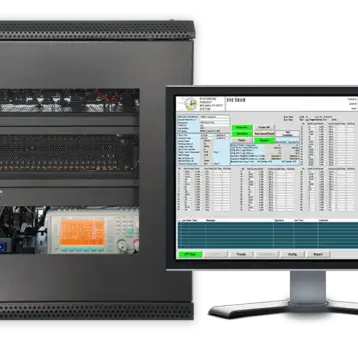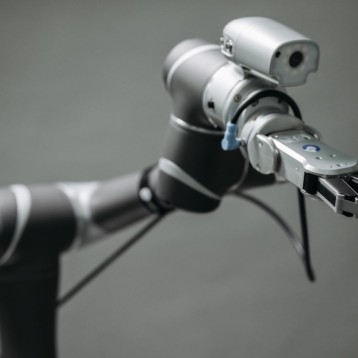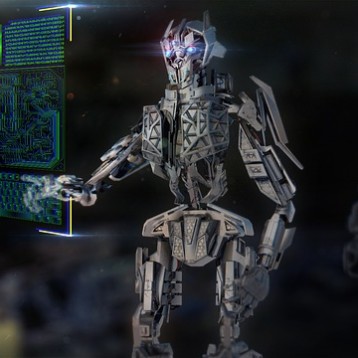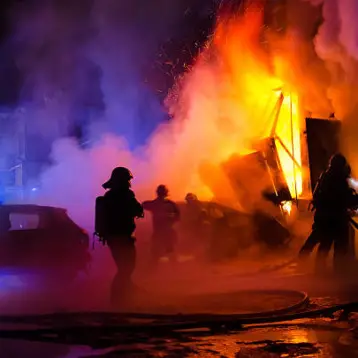A team of scientists from the department of Computer Science at Bar-Ilan University in Israel have developed an algorithm which could be employed in the practice of utilizing robots in a variety of military missions. This project, which has been recently unveiled at a scientific fair held at the university, provides a theoretical basis for a system under which robotic squadrons will be able to cooperatively carry out such tasks as routine patrols around military bases and provide lookouts against enemy invasions.
 |
Dr. Gal Kaminka
(Credit: Bar-Ilan University) |
|
The scientists’ objective was to delegate as much independence as security allowed to their “robotic soldiers”; as the system currently stands, the robots are capable of dividing a given area into non–overlapping “working territories”, in which each robot oversees a specific range, without any manual interference. The mechanic soldiers will also be able to respond instantaneously to any detected signs of enemy incursion by alarming the central command or executing a set of predefined actions, while maintaining a line of communication with the live soldiers at the base. The scientists say they are not currently considering weaponizing the robotic soldiers, instead developing them strictly for surveillance and observation tasks.
 |
IAI Guardium unmanned ground
security vehicle
(Credit: Israel Aerospace Industries) |
|
“Each robot is equipped with various sensors – video, infra-red, sound wave detectors and more. The robotic soldier is controlled by a so-called “brain unit”, and has a number of systems, which provide it with needed independence in its actions, so it can make “intelligent” decisions and successfully carry out its missions. In order to effectively handle incursion cases, robots of the entire “fleet” must be well –coordinated” – says Dr. Gal Kaminka, a staff member at the computer science faculty at Bar-Ilan and lead researcher on the project. “A group of robots in a team work together towards a common goal. We’ve demonstrated how a single robotic unit is functioning in a patrol mission – the robots can patrol forward, backwards or aside, along a specified path or across a field, which was assigned for their protection. Therefore, it is imperative that each robot will be aware of its peers’ positions and actions at any given time.”
 |
Elbit Avantguard ground
vehicle (Credit: Elbit Systems) |
|
“The algorithm we’ve developed, as part of a broader project financed by the Ministry of Defense, allows the robots to patrol together as a group in an optimal manner. When the robots function as a team, even if the enemy has full information as to their positions, it will still have difficulty penetrating their shield network, due to the fact that it’s impossible to accurately predict their future movements.”
“The outset of robot integration into the military dates back many years – until this day, we’ve been familiar mainly with many types of unmanned aerial vehicles (UAVs), whose operation is relatively simpler, since they do not need to overcome obstacles that arise in rough terrain conditions. Land-based devices require a much more complex mechanics. This is, without doubt, an important first step on our way to integrating essential robotic tools into machinery that will spare human lives and labor in the military,” said Dr. Kaminka.
TFOT has previously covered a number of novel autonomous systems, which were specifically designed to assist in military missions. Such is the Target Recognition Operator Notification system (TRON), which is being developed at the Air Force Research Laboratory. Also, be sure to check out our article covering the development of miniature spider-like robots, which will be capable of carrying out intelligence-gathering tasks in places that are too dangerous for soldiers to enter. In 2007 TFOT covered DARPA’s Robotic Urban Challenge, which was the largest scale research and development program for autonomous vehicles to date.













